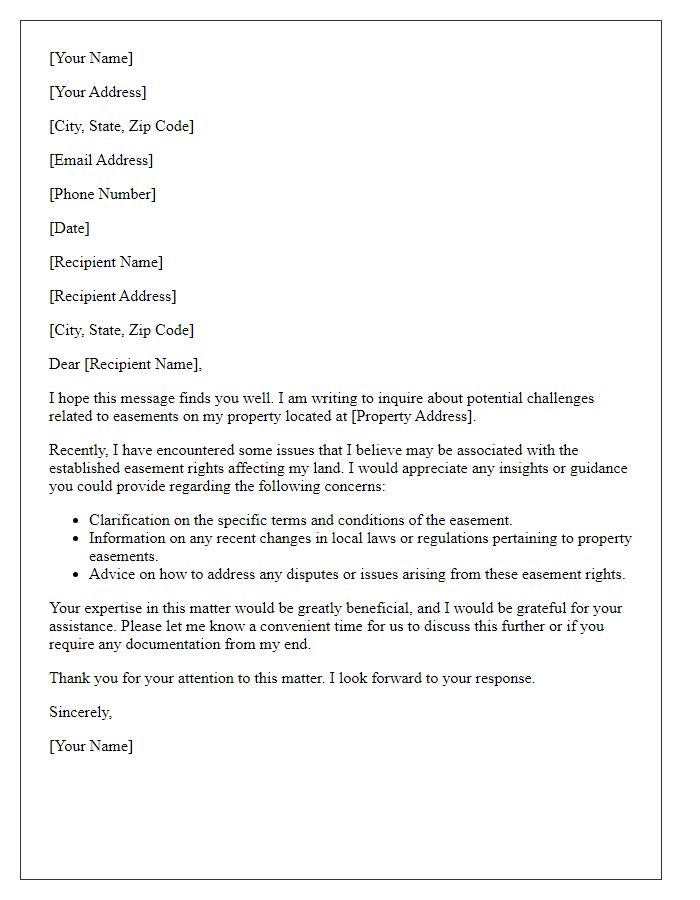Are you facing a property dispute and unsure of how to approach it? Resolving such conflicts can be daunting, but with the right strategies and a well-crafted letter, you can lay the groundwork for a peaceful resolution. In this article, we'll guide you through creating an effective letter template that clearly communicates your concerns and intentions. So, let's dive in and explore how you can navigate this process smoothly!

Identification of Parties and Property Details
Identification of Parties involved in the property dispute requires clear documentation of the individuals or entities engaged in the conflict. This typically includes full names, contact information, and property roles, such as owner, tenant, or agent. Property details should encompass the address, legal description, and any relevant identifiers like parcel numbers or deed references that accurately pinpoint the location. Including the property type, whether residential, commercial, or mixed-use, is essential to contextualize the dispute. An accurate portrayal of these elements aids in streamlining the resolution process and ensuring all parties understand their rights and responsibilities regarding the identified property.
Clear Statement of the Dispute
A property dispute involving boundaries can arise when neighboring landowners, such as John Doe and Jane Smith, disagree over a 0.5-acre parcel of land in Springfield, Illinois. John claims that the fence installed in 2021 marks the correct boundary, following a property line survey conducted by XYZ Surveyors. Conversely, Jane suggests that historical deeds dating back to 1955 indicate a different boundary line that infringes upon her property. Key documentation, like property deeds, surveys, and photographs from 2021, are essential to resolving this conflict. The involvement of a mediator or a legal professional may help clarify misunderstandings, leading to a fair resolution for both parties.
Reference to Relevant Laws or Regulations
In property dispute resolutions, understanding the pertinent laws and regulations is crucial for establishing legal ownership and rights. The Real Property Act of 1900 (NSW) outlines the principles of land title and ownership, while the Property Law Act of 1974 (QLD) addresses issues like leases and tenancy agreements. Local government regulations, such as zoning laws in metropolitan areas, dictate permissible land use, which impacts dispute resolutions. Additionally, the Conveyancing Act of 1919 governs the sale and transfer of property, ensuring clarity in ownership transfers. Knowledge of these legal frameworks assists parties in navigating dispute resolutions effectively, providing a roadmap for mediation or court proceedings. For instance, sections regarding adverse possession can provide a basis for claims of ownership after prolonged occupation without permission.
Proposed Resolution or Settlement Terms
Residential property disputes often arise from misunderstandings regarding boundaries or contractual obligations. In such cases, mediation can be an effective way to resolve issues amicably. Proposed resolution terms may include specific agreements on property lines, financial compensation, or repair responsibilities. For instance, a homeowner could agree to pay a neighbor $2,000 for damage caused during renovations. Additionally, both parties might commit to a written agreement outlining future responsibilities, such as regular maintenance of shared fences. Such resolutions can prevent further conflicts while fostering goodwill in the neighborhood.
Contact Information for Further Communication
Property disputes often arise in residential areas, especially in cities like Los Angeles, California, where zoning issues and boundary disagreements can create lifelong issues. A property owner might face challenges in accessing shared amenities, such as community pools or parking spaces, leading to frustration and potential legal action. Resolving these disputes often involves legal documents, such as cease and desist letters and mediation agreements, with effective communication being essential for a smooth resolution process. The involvement of local real estate lawyers, preservation of evidence through digital documentation, and adherence to the California Code of Civil Procedure can greatly influence the outcome of the dispute. Engaging in direct communication and seeking alternative dispute resolution methods can lead to amicable solutions without prolonged court battles.
Letter Template For Property Dispute Resolution Samples
Letter template of demand for resolution of landlord-tenant property issues













Comments